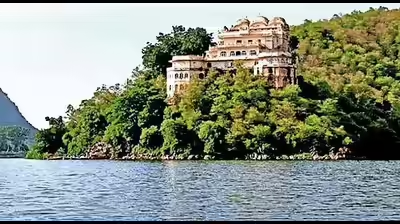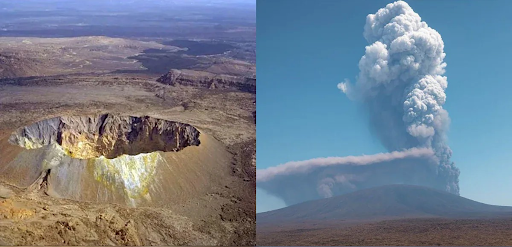




Disclaimer: Copyright infringement not intended.
An Assam-based environmentalist has raised alarm over alleged effluent discharge from Numaligarh Refinery into Dhansiri river citing violation of CPCB norms & severe ecological risks to aquatic biodiversity.
|
Category |
Details |
|
Incident |
Alleged discharge of hazardous effluents from Numaligarh Refinery Limited into Dhansiri River in Golaghat, Assam. |
|
Complaint by |
Apurba Ballav Goswami an Assam-based environmentalist. |
|
Reported To |
Central Pollution Control Board citing violations of CPCB norms under Environment (Protection) Rules, 1986. |
|
Analyzing Agency |
AGT Biosciences (OPC) Private Limited. |
|
Date of Sample Collection |
March 11, 2025 |
|
BOD Level |
18.0 mg/L (Permissible limit: 15.0 mg/L) Indicates high organic load causing oxygen depletion in water. |
|
COD Level |
142.0 mg/L (Permissible limit: 125.0 mg/L) Suggests high load of oxidisable pollutants. |
|
Oil & Grease |
11.5 mg/L (Permissible limit: 10.0 mg/L) Can block oxygen exchange & smother aquatic life. |
|
Ecological Risk |
Threat to fish species like mahseer & catfish, possible creation of hypoxic zones, damage to benthic fauna. |
|
Broader Impacts |
Bioaccumulation, reproductive failure & long-term food web disruptions across aquatic & terrestrial predators. |
|
Demands by Activist |
Independent investigation, long-term biodiversity & water quality monitoring & strict enforcement of environmental norms. |
|
Feature |
Details |
|
Main River of |
Golaghat District (Assam) & Dimapur District (Nagaland) |
|
State(s) |
Assam & Nagaland |
|
Length |
Approximately 352 km |
|
Catchment Area |
~1,220 sq.km |
|
Type |
Perennial river |
|
Origin |
Laisang Peak, near Intanki National Park, Nagaland |
|
Initial Flow Direction |
Northwesterly for 40 km from source |
|
Next Flow Direction |
Turns northeast for approx. 76 km up to Dimapur |
|
Final Flow Direction |
Turns northward beyond Dimapur till Golaghat; then northwest to join Brahmaputra |
|
Confluence |
Joins Brahmaputra River at Dhansirimukh in Assam |
|
Major Tributaries |
Doyang River (right bank), Chathe River |
|
Key Locations Along Course |
Intanki National Park, Dhansiri Reserved Forest, Dimapur, Golaghat |
|
Districts Traversed |
Dimapur (Nagaland), Karbi Anglong (Assam), Golaghat (Assam) |
|
Terrain & Topography |
Flows through hills, forests, floodplains & agricultural zones |
|
Eco-sensitive Zones |
Flanked by Intanki National Park (Nagaland) & Dhansiri Reserved Forest (Assam) |
|
Ecological Importance |
Rich biodiversity with species like mahseer, catfish, otters, kingfishers; home to riparian flora like reeds & bamboo |
|
Human Uses |
Drinking water, irrigation, inland fishing, traditional livelihood |
|
Cultural Significance |
Revered by local tribal communities; forms part of socio-ecological landscape |
|
Environmental Concerns |
Sand mining |
|
Recent Environmental Issue (2025) |
Alleged discharge of hazardous effluents from Numaligarh Refinery Limited, exceeding CPCB norms (BOD, COD, Oil & Grease), threatening aquatic life & river ecology |
|
Strategic Significance |
Tributary of Brahmaputra; critical to Northeast India’s hydrology & biodiversity |
|
Law / Regulation |
Year |
Implementing Authority |
Key Provisions |
Relevance to Dhansiri Case |
|
Environment (Protection) Act |
1986 |
Ministry of Environment, Forest & Climate Change (MoEFCC) |
Umbrella legislation |
CPCB’s effluent standards are issued under this Act |
|
Water (Prevention & Control of Pollution) Act |
1974 |
Central Pollution Control Board (CPCB), State Pollution Control Boards (SPCBs) |
Regulates discharge of pollutants into water bodies |
NRL requires consent to operate & discharge effluents under this Act |
|
Air (Prevention & Control of Pollution) Act (indirectly linked via ETP emissions) |
1981 |
CPCB & SPCBs |
Controls emissions from industrial operations, including gaseous emissions from ETPs (indirect impact on water through atmospheric deposition) |
Not directly applicable to Dhansiri but relevant to integrated pollution control |
|
EIA Notification (under EPA, 1986) |
First issued 1994, most recent in 2006 |
MoEFCC |
Mandates Environmental Impact Assessment for refineries |
Any expansion or modification in NRL operations should comply with this |
|
National Green Tribunal (NGT) Act |
2010 |
National Green Tribunal |
Provides a mechanism for expeditious disposal of environmental cases |
Concerned citizens like environmentalist in Assam can move NGT |
|
Factories Act (Section 41B & C) |
1948 (amended) |
Ministry of Labour & Employment |
Requires hazardous industries to have on-site emergency plans; safe handling & disposal of wastes |
Safety, emergency preparedness at industrial sites like NRL |
|
CPCB Norms for Petroleum Refineries (Effluent Discharge Standards) |
Under EPA, 1986 |
CPCB |
Specific limits for BOD (15 mg/L), COD (125 mg/L) & Oil & Grease (10 mg/L) for refineries |
Violated in Dhansiri case: BOD (18), COD (142), O&G (11.5) |
|
Biological Diversity Act |
2002 |
National Biodiversity Authority |
Protection of biological resources, endangered species & riverine biodiversity |
Fish like mahseer, endangered aquatic species threatened by hypoxia & toxicity |
|
Wildlife Protection Act (applicable if protected areas like Intanki NP or Dhansiri RF are impacted) |
1972 |
MoEFCC, Forest Department |
Prohibits pollution or destruction in protected areas |
Important if effluent affects ecosystems adjacent to PAs |
For more such articles, please refer to IAS GYAN
Sources:
|
PRACTICE QUESTION Q. Which of following laws in India provides legal basis for setting industrial effluent discharge standards for petroleum refineries? a) Water (Prevention & Control of Pollution) Act, 1974 Answer: (b) Explanation: |






© 2025 iasgyan. All right reserved